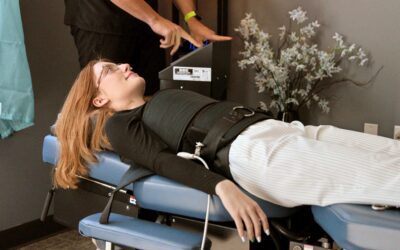Your spine has 33 bones that make up the vertebral column. Your vertebrae are stacked on top of each other like a tower.
The spine also has discs that work as shock absorbers between each of the vertebra. These discs are flat and circular.
They contain a type of gel that is surrounded by a tough cartilage ring. Your spinal discs help your spine stay aligned and provide pivot points so you can move freely, but over time your body can accumulate pain from injuries, lifestyle, or wear and tear.
There are different types of spinal disc injuries that require different types of treatment. Getting back pain relief for a herniated disc might require different treatment than a bulging disc.
Your chiropractor can take x-rays to help diagnose the problem, but you may also require an MRI to help pinpoint exactly what’s causing you discomfort.
Bulging Disc
Over time the discs in your spine can lose their shape and “bulge,” meaning that they start expanding beyond their normal shape in your spinal column. This occurs when the cartilage ring in a disc flattens and pushes the “gel” out, which then hits nerves.
Symptoms can include muscle weakness, spasms, numbness in the legs and feet, and loss of coordination. You might feel worse after sitting for long periods or sleeping. You can also experience pain or tingling in your hands or arms.
Bulging discs can result from injury, improper lifting form, poor posture, sedentary lifestyle, and other factors.
Herniated Disc
Your spinal discs contain a type of gel surrounded by a fibrous ring. You can think of it like a shell. Sometimes the shell gets a hole in it and the gel “escapes.” This is what happens in herniated discs. The material slips out and pushes on nerves.
Symptoms can include sharp pain, which might only be on one side of the body. You might also feel numbness in just one part of the body, like your calf or the bottom of your foot.
Some people experience these symptoms in their arms or shoulders. As with bulging discs, you can experience weakness. Some people experience sciatic pain like burning or tingling.
Herniated discs often start off as bulging discs and also result from the same kind of chronic misuse or normal wear and tear.
Sequestered Disc
A sequestered spinal disc is also known as a free fragment. Sequestered discs are a type of herniated disc during which the gel escapes the disc completely. The fragment can move along the spinal column and cause pain in different parts of the body.
When the fragment is floating near the neck, you might experience numbness in your hand. If it migrates toward your lumbar spine, you may experience pain in your lower back.
Sequestered discs can cause incontinence and diarrhea. They can also affect your breathing or cause chest pain.
Usually spinal discs degenerate over time, just as with bulging or herniated discs. You do not need a serious injury to have a sequestered disc.
Treatment Options
Most health practitioners begin with conservative treatments: rest, heat and ice, and over-the-counter pain meds. Some people may require prescription painkillers or muscle relaxants.
It is important to stay active under the care of a doctor or physical therapist to avoid muscular atrophy.
Your chiropractor can help you maintain spinal health as a preventative measure or after experiencing pain or injury.
We’re Here To Help
If you’ve been suffering from a bulging disc, a herniated disc or any other type of back pain and would like to learn more about how chiropractic care can improve your quality of life, we invite you to schedule an appointment and find out for yourself if chiropractic treatments are the solution that would work best for your body.
Call 417 Spine to schedule an appointment and get started on your path to optimal health.


